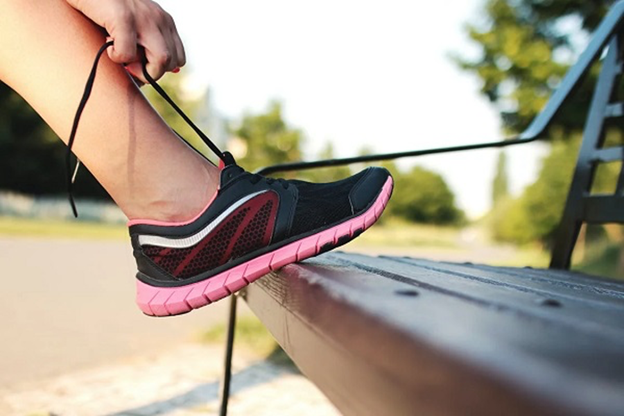If you are a runner, or have been in the past, you may have heard that running can be a cause of arthritis. Perhaps you have even stopped running because you don’t want to risk ending up with arthritic joints when you’re older?
It appears that there is definitely some fear about this topic so this article will go through some details to put your mind at ease – because the impact of running does NOT cause arthritis.
What is Arthritis?
The word alone can conjure up worry without even knowing exactly what it is. There are many different types of arthritis, however a simple explanation is inflammation in the joints. Swelling and tenderness results in stiffness and pain that can restrict the range of motion, as well as possible wear and tear and infections.
Arthritis is most common among women and is not a disease that comes with aging, although some types are more prevalent in older people.1 It can often occur in young, active people.
Exercise and Joints
Another misconception is that exercise damages the cartilage in the body, but current research shows otherwise. Exercise does not directly cause harm to joint cartilage.
Osteoarthritis is the most common form of this disease, and it was once considered ‘wear and tear’ of the cartilage. Now, doctors are aware that osteoarthritis affects the whole joint, including bone, muscle and ligaments, as well as the cartilage.
Joints can recover from injury, but when osteoarthritis is present the repair processes are overtaken by the destructive processes. This destruction can be due to being overweight, your genetics, injuries and even how a joint is used. If there is some misalignment in the joint, caused by weak muscles or simply being born that way, any movement of that joint may contribute to the cartilage being worn away.2
Our joints are built to support us and are incredibly robust and able to adapt according to the various exercise loads we put on them.
Running for Your Health
Studies conducted over a 20 year period in the US compared several hundred members of a running club with a healthy control group who were all aged over 50. The results found that vigorous exercise (running) at middle age and above is likely to lead to very good movement later in life. There was also a reduction in cardiovascular-related deaths and a reduction in deaths caused by cancerous tumors and neurologic disorders.3
So, put your runners on without the fear of arthritis!
Other Benefits of Running
There are so many benefits of cardiovascular exercise, as long as you do them safely and within your fitness level.
- Improvement in cardiovascular fitness and aerobic capacity.
- Decreased frailty due to increases in skeletal muscle mass.
- Improved cognitive functions.
- Reduction in the presence of dementia.
- Lower risk of type 2 diabetes.
- Improved energy levels.
- Lower stress and anxiety, and improved sleep.
By keeping up your running you may live a longer life, but also have a better quality of life in the years to come.
There is no evidence to suggest running is bad for you. In fact, the benefits of this exercise outweighs any potential health risk. As with all exercise, build up your intensity and distance gradually to allow your body to adapt and safely tolerate the increased load.
Factors to Consider with Long Distance Running
There are some potential risk factors for developing arthritis if you are a long distance runner. Advice from the sports physio team at Melbourne Sports Physiotherapy is to keep the following in mind if you are considering long distance running:
- A current knee injury or any uncontrolled swelling.
- Proprioceptive deficit including poor balance and control.
- Poor muscle tone around joints.
- Being in the early recovery phase after knee surgery.
- Obesity – focus on other types of exercise or short runs until your weight is at an appropriate level for longer runs.
What to do if Diagnosed with Arthritis
If you have been diagnosed with arthritis, it is important to maintain your current activity levels at the least. Aim to increase your physical activity to a safe and comfortable level. To manage arthritis, it is recommended to undertake aerobic exercise, strengthen the body, do some range-of-motion exercises and maintain a healthy weight.
Seek the assistance of a health professional to better understand your condition. They will help guide you with particular activities and lifestyle changes to benefit your quality of living.
Knee Pain While Running
If you experience knee pain, don’t jump to the conclusion it is arthritis – it is most likely overload by doing too much too soon. Visit a sports physio to have the pain assessed and to receive a specific treatment plan and advice on minimising injury risk in the future. Melbourne Sports Physiotherapy aims to have you moving pain free as quickly as possible. They offer a large variety of services including spine physiotherapy, trochanteric bursitis physiotherapy, post operative physiotherapy, soft tissue massage, and much more. Call or book an appointment online today.
1 https://www.arthritis.org/health-wellness/about-arthritis/understanding-arthritis/what-is-arthritis
2 https://www.abc.net.au/everyday/can-too-much-exercise-wear-out-your-joints/11074252
3 https://www.ncbi.nlm.nih.gov/pmc/articles/PMC2556152/
Image URL: Person Foot on Bench · Free Stock Photo (pexels.com)

